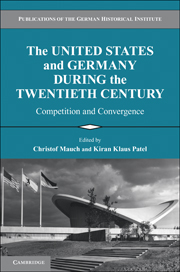Book contents
- Frontmatter
- Contents
- Contributors
- Acknowledgments
- 1 Modernities: Competition versus Convergence
- 2 Empires: Might and Myopia
- 3 Religion: Belief and Power
- 4 Law: Constitutionalism and Culture
- 5 Welfare: Entitlement and Exclusion
- 6 Immigration: Myth versus Struggles
- 7 Masses: Mobilization versus Manipulation
- 8 Market: Consumption and Commerce
- 9 Authority: Schools and Military
- 10 Gender: Equality and Differences
- 11 Environment: Conservation versus Exploitation
- 12 Film and Television
- 13 Education: Universities and Research
- 14 Media: Government versus Market
- Index
5 - Welfare: Entitlement and Exclusion
Published online by Cambridge University Press: 12 October 2018
- Frontmatter
- Contents
- Contributors
- Acknowledgments
- 1 Modernities: Competition versus Convergence
- 2 Empires: Might and Myopia
- 3 Religion: Belief and Power
- 4 Law: Constitutionalism and Culture
- 5 Welfare: Entitlement and Exclusion
- 6 Immigration: Myth versus Struggles
- 7 Masses: Mobilization versus Manipulation
- 8 Market: Consumption and Commerce
- 9 Authority: Schools and Military
- 10 Gender: Equality and Differences
- 11 Environment: Conservation versus Exploitation
- 12 Film and Television
- 13 Education: Universities and Research
- 14 Media: Government versus Market
- Index
Summary
The welfare state is both a child and a defining feature of the modern age. Of course, welfare provision – the marshaling of collective resources to address a range of material hardships and social needs – existed long before the industrial era. But it was with the rise of industrial capitalism that the nation-state first emerged as the chief purveyor of social welfare. Conceived to afford citizens some protection from the uncertain, often unforgiving swirl of market forces, the modern welfare state unfolded at various times, in various forms, and with varying aims and impacts from one country to the next.
To examine the history of any welfare state – still more, to compare different ones – is to raise a host of questions. How, in this or that country, has welfare been defined? What has been the array of goods, services, and protections contained within it, and for which people, toward what ends, and by what mechanisms has welfare been dispensed? In what measures has the welfare system either advanced or subverted ideals of democracy, equality, and solidarity? How has it challenged or reinforced existing barriers of class, gender, or ethnicity?
How Germany and the United States tackled such questions is essential to their respective encounters with modernity. A comparative study calls forth its own particular batch of questions. Some are distinctive to the German experience: Why did the welfare state take root there so early – that is, so soon after its formation as a nation and after its industrial takeoff? What accounts for Germany's ongoing, indeed expanding, commitment to national welfare provision even as it passed through a jarring succession of political systems? How did Cold War welfare policy vary between East and West Germany?
Above all perhaps, interest in the German welfare state has been animated by a broader issue – the peculiarities of Germany's encounter with modernity, its Sonderweg, or distinctive path. According to this paradigm, the Germany of the industrial age remained a land marked by the prevalence of preindustrial values, the dominance of preindustrial elites, and the weakness of democratic structures. The peculiar tensions between the modern and the premodern, the industrial and the preindustrial features of Imperial Germany figured prominently in longterm explanations of the rise of Nazism, with Nazi social policy in turn traced to the paternalistic and authoritarian features of Bismarck's welfare state.
- Type
- Chapter
- Information
- The United States and Germany during the Twentieth Centurycompetition and convergence, pp. 70 - 84Publisher: Cambridge University PressPrint publication year: 2010

